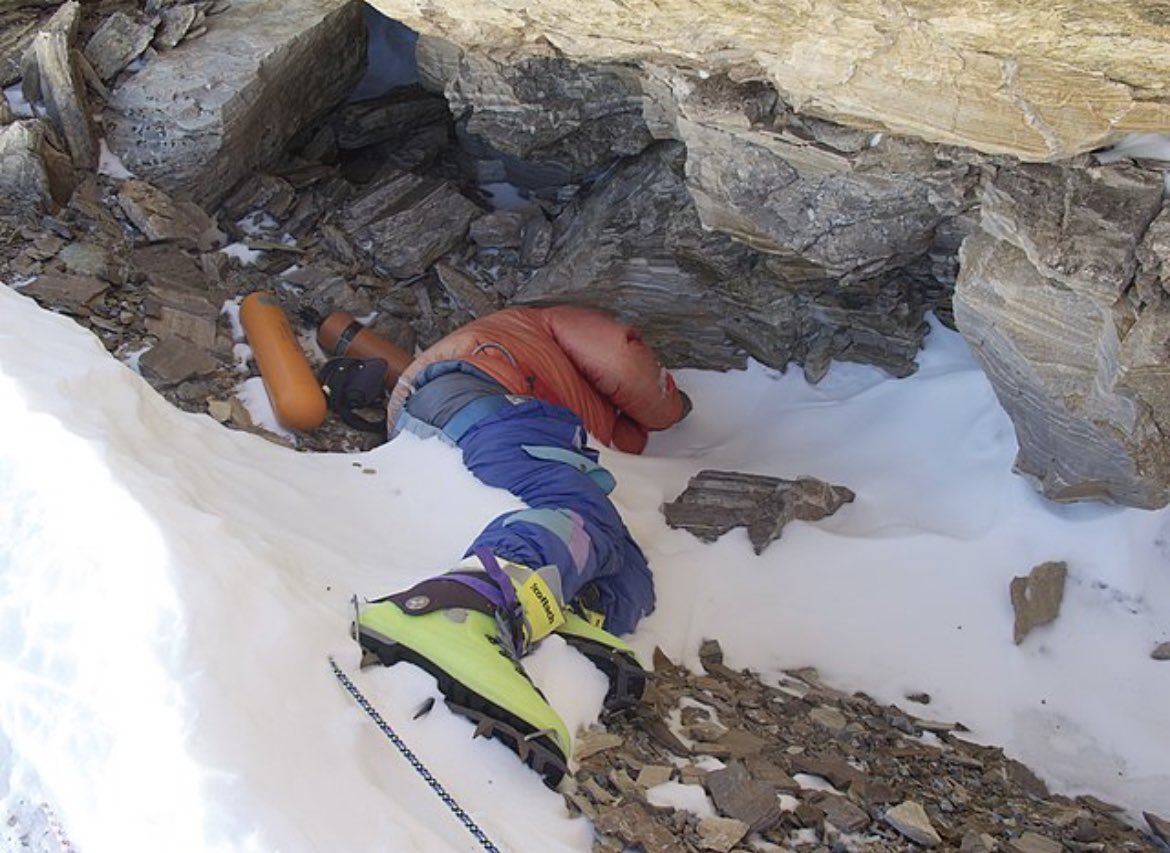No one knows exactly how many bodies remain on Mount Everest today, but there are certainly more than 200. Climbers and Sherpas lie tucked into crevasses, buried under avalanche snow and exposed on catchment basin slopes – their limbs sun-bleached and distorted. Most are concealed from view, but some are familiar fixtures on the route to Everest’s summit.
Perhaps most well-known of all are the remains of Tsewang Paljor, a young Indian climber who lost his life in the infamous 1996 blizzard. For nearly 20 years, Paljor’s body – popularly known as Green Boots, for the neon footwear he was wearing when he died – has rested near the summit of Everest’s north side. When snow cover is light, climbers have had to step over Paljor’s extended legs on their way to and from the peak. More at the BBC
Over 200 dead bodies lay along the route to the top of Mount Everest. The bodies are used as landmarks by climbers and have been given nicknames such as "Green Boots". pic.twitter.com/eIHbwnVydt
— Morbid Knowledge (@Morbidful) June 2, 2023
